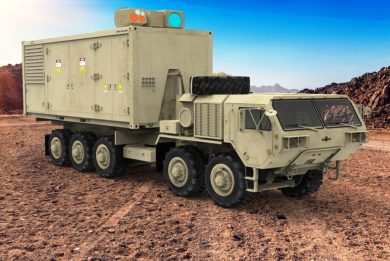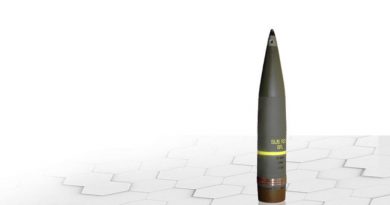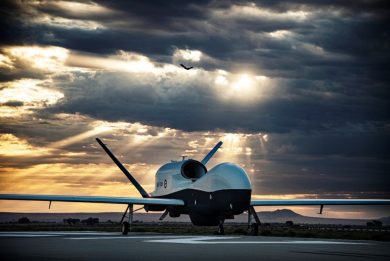
Switchblade 300, the combat proven munition
While writing, the US Army should have started receiving its batch of Switchblade loitering munitions related to the over 75 million US$ contract announced in May 2020, that contract being funded for the first year of procurement through a Joint Urgent Operational Need Statement from the United States Army Tactical Aviation and Ground Munitions (TAGM) project office. “This LMAM (Lethal Miniature Aerial Missile) contract is the largest ever awarded for this category of systems and is a testament to its battle-proven track record,” Wahid Nawabi, Aerovironment CEO, underlined.
Two additional one-year options, currently unfunded, would extend the period of performance through April 2023 on a sole-source basis, according to AeroVironment press release. In fact the Army will get the Switchblade 300, the latest iteration of the man-portable system that has been around for nearly a decade, which was re-named adding the “300” to differentiate it from the bigger system that was unveiled at the press conference.
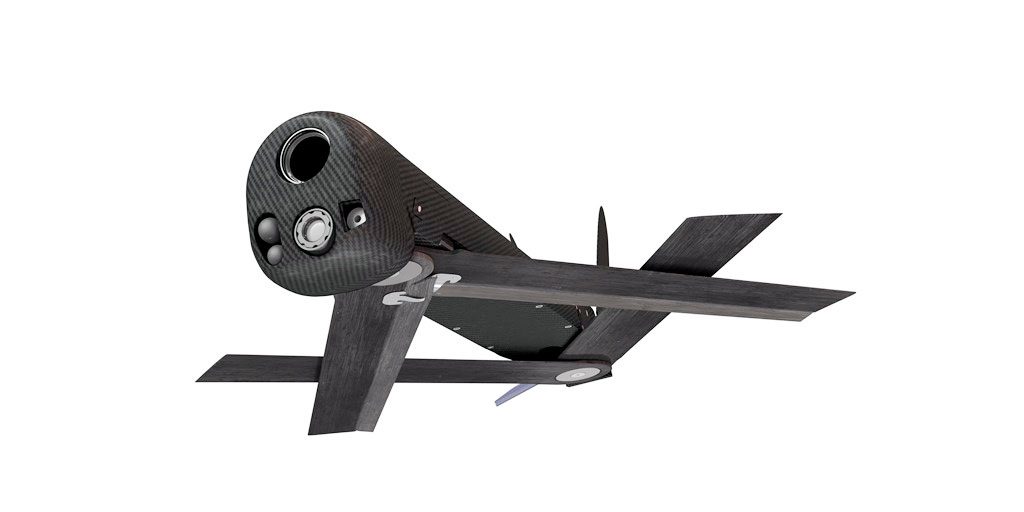
“The Switchblade 300 is a lightweight, organic, beyond line-of-sight precision guided weapon,” Brett Hush, Senior General Manager, Product Line Management of AeroVironment Tactical Missile Systems business adds. Its military avionics, GPS/INS and E/O – IR sensor suite are the same fitted to the Blackwing ISR submarine launched system, allowing economy of scale. Targeting optics include dual front and side looking E/O cameras and one IR nose camera with stabilized electronic pan-tilt-zoom. A secure digital data link ensures two-way communications between the air vehicle and the operator, the Switchblade 300 being fitted with a precision effects munition payload, with directional precision engagement, ensuring low collateral damages. This is provided by Northrop Grumman (formerly Orbital ATK), and has the size of a 40 mm grenade warhead, mostly aimed at antipersonnel engagements and also effective against soft-skinned vehicles.
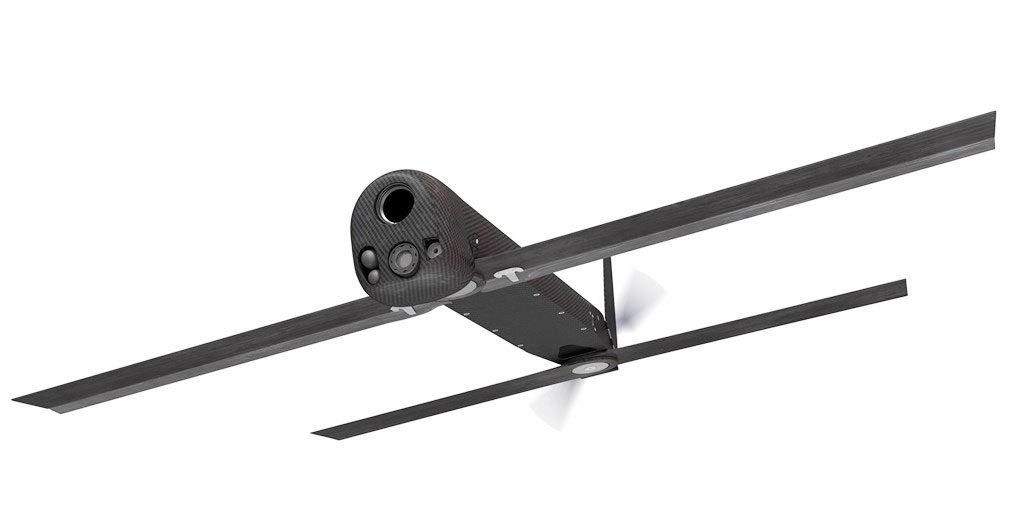
A soldier oriented system, fully manportable, the overall weight of the munition including the launch tube is 2.5 kg, and three such munitions can be hosted in a rucksack. From the stored position, it takes less than two minutes to deploy and launch the Switchblade 300; this, together with the over 100 km/h cruise speed and the 160 km/h dash speed allow it to reach the maximum range, 10 km, in less than 6 minutes, to acquire, identify and engage high volatility targets. Considering the 15 minutes endurance, this gives time to loiter over the target, and eventually acquire a different one should the first attack be waved off, something that can be done until few seconds before detonation, according to AeroVironment officials.
The Switchblade 300 can receive target data from other systems, i.e. AeroVironment Wasp, Raven or Puma UAS; once the UAS operator has positively identified the target, its grids are automatically transferred to the loitering munition via machine-to-machine interface, reducing transfer time and with no chance of error. Once the engagement completed, the UAS can provide battle damage assessment
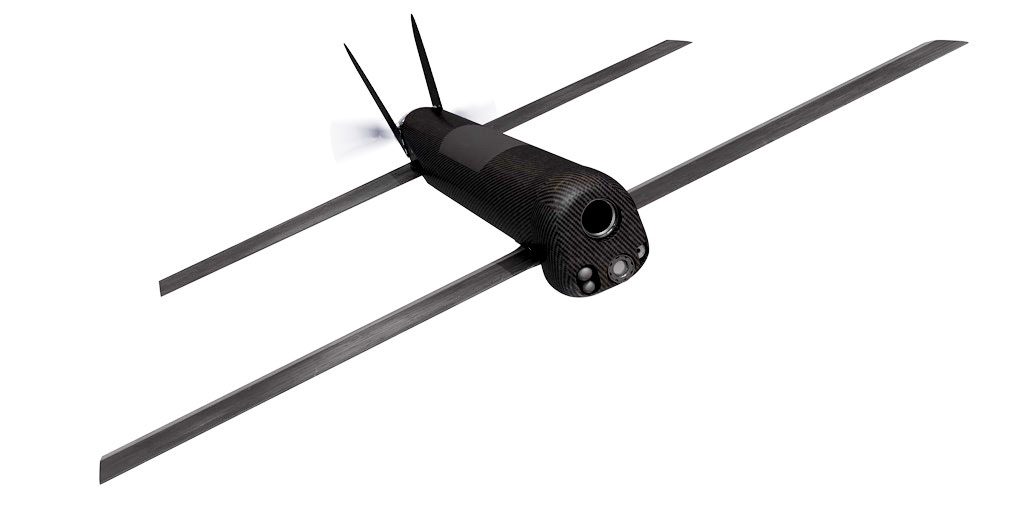
Current scenarios require multi-mission capabilities across multiple domains, and the capacity to operate in access-denied combat areas. AeroVironment is therefore looking at cooperation with platform producers to integrate its loitering munition, expanding their operational effectiveness. “In 2018 we teamed with General Dynamics Land Systems for the Next Generation Combat Vehicle, combining automated ISR, scouting assets with integrated batteries of Switchblade 300, providing a new level of battlefield lethality, survivability and combat effectiveness for ground forces,” Todd Hanning, Product Line Manager, Tactical Missile Systems explained. The two companies remain partners in the new competition for the NGCV that should start in the early future. Another company with which AeroVironment is teaming is Kratos; announced in March 2019, this cooperation aims at demonstrating the ability to launch, communicate with, and control the Switchblade 300 from Kratos high-speed, runway-independent unmanned aircraft. The idea is to exploit the smaller munition to provide information to the mothership, while ensuring also an attack capability, the Kratos UAS ensuring long range data link to the control centre to better coordinate the effects on targets and optimise the use of attack assets. Due to the limited weight and size of the Switchblade 300, the Kratos UAS can be fitted with a number of missiles, thus acquiring a considerable high precision firepower capability. Initial air-launched tests are planned in early 2021.
Remaining in the air-launched arena Brett Hush added: “among AeroVironment tactical UAS we find the Vapor line of unmanned small helicopters, and recently with internal funds and due to the interest from a customer we took two Switchblade 300, as we deliver them to the DoD, and strapped them on to that rotary wing unmanned aircraft, showing it can carry such a payload and engage targets from the air, another example of how we integrate those missiles on other platforms.” It is worth remembering that in past years the US Marine Corps fired the Switchblade from an MV-22 Osprey tilt-rotor aircraft.
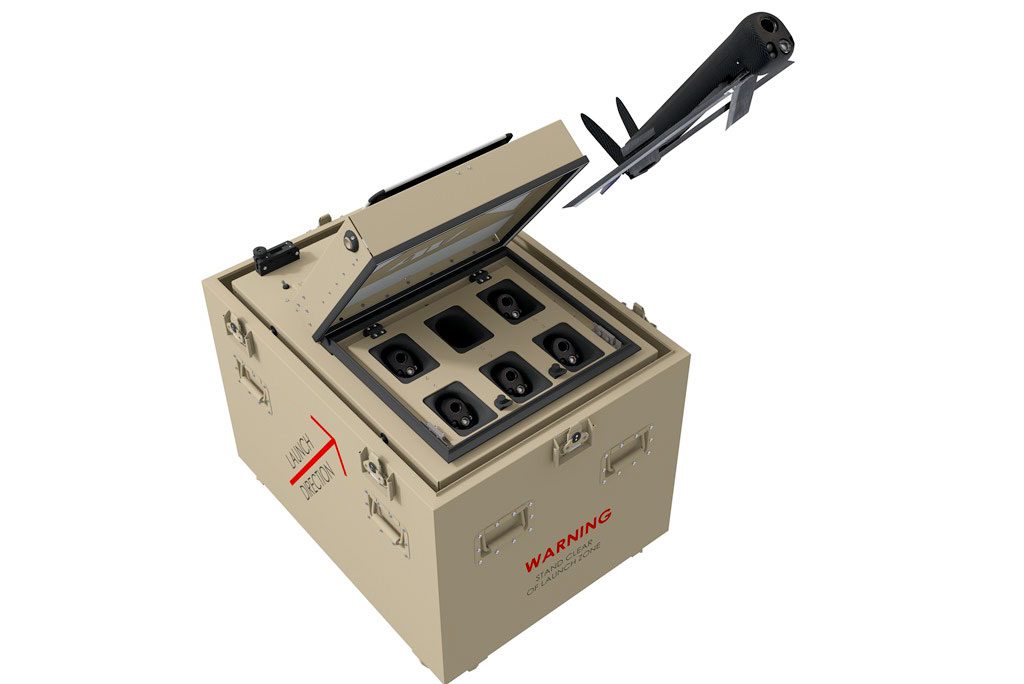
The Switchblade 300 can be fitted into the same MultiPack Launcher (MPL) used by the Blackwing, which can be installed onto a vehicle, giving it a considerable firepower thanks to the six Switchblade 300 hosted by the system. The MPL can also be installed on the ground, i.e. in a force protection mode inside a forward operating base or a combat outpost. In that case the integrated solar panel and internal battery make it fully autonomous, while a 30 meters control cable links it to the launch controller allowing remote operation.
A well-proven system, the Switchblade man-portable system has been around for nearly a decade, the Switchblade 300 will remain at the forefront thanks to its modularity, i.e. the payload can be easily replaced thanks to the air vehicle layout, and to the continuous improvements added by AeroVironment.

